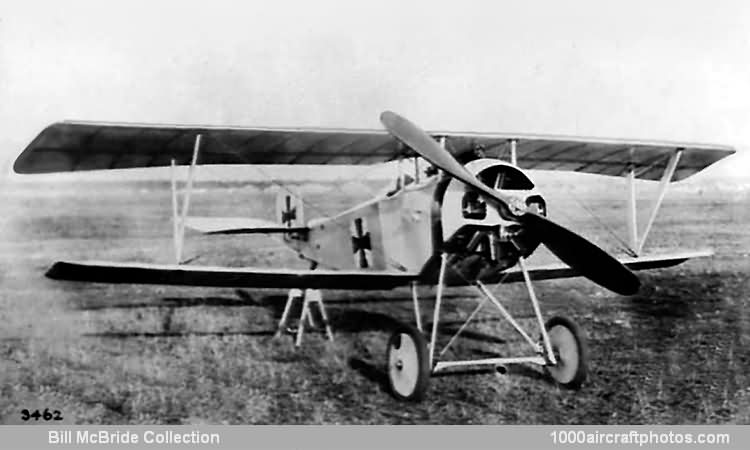11/30/2010. Remarks by Johan Visschedijk: "Late in 1916, at the suggestion of the Idflieg, Siemens-Schuckert began work on a new single-seat fighter designed by Dipl.Ing. Harald Wolff around the new eleven-cylinder Siemens & Halske Sh III geared rotary engine rated at 160 hp. The result, the D.II, was a rotund single-bay biplane primarily of wooden construction, the wings featuring two hollow box spars and the fuselage being a circular-section semi-monocoque of three-ply, intended armament being two 0.311 in (7.9 mm) LMG 08/15 machine guns.
Three prototypes were initially built, the D.II, the D.IIa and the D.IIb. Although completed early 1917, delays in availability of the Sh III engine prevented flight test of the prototypes, the first of these flying in June. Erratic engine behavior notwithstanding, the D.IIs demonstrated excellent climb performance – the D.IIb attaining 16,405 ft (5.000 m) in 15 min 30 sec during August – and three more development aircraft were ordered.
Two of these, designated D.IIc kurz (short) and D.IIc lang (long), differed in wing span and area. The D.IIc kurz had a span of 27 ft 10.67 in (8,50 m) and a wing area of 208.8 sq.ft (19,40 sq.m) whereas the D.IIc lang had a span and area of 29 ft 6.33 in (9,00 m) and 193.97 sq.ft (18,02 sq.m) respectively, and reduced chord on the upper wing.
The third aircraft, the D.IIe, had dural wing spars, broad-chord I-type interplane struts and unbraced wings. The D.IIc kurz entered flight test on October 22, 1917, the D.IIc lang following on November 15, and an initial order for 20 series aircraft, designated D.III and based on the D.IIc kurz was placed in December. The D.IIc wing cellule was found to lack rigidity in flight, dictating introduction of interplane bracing cables which negated the original purpose of the dural spars, this aircraft later being rebuilt to D.IV standards."
